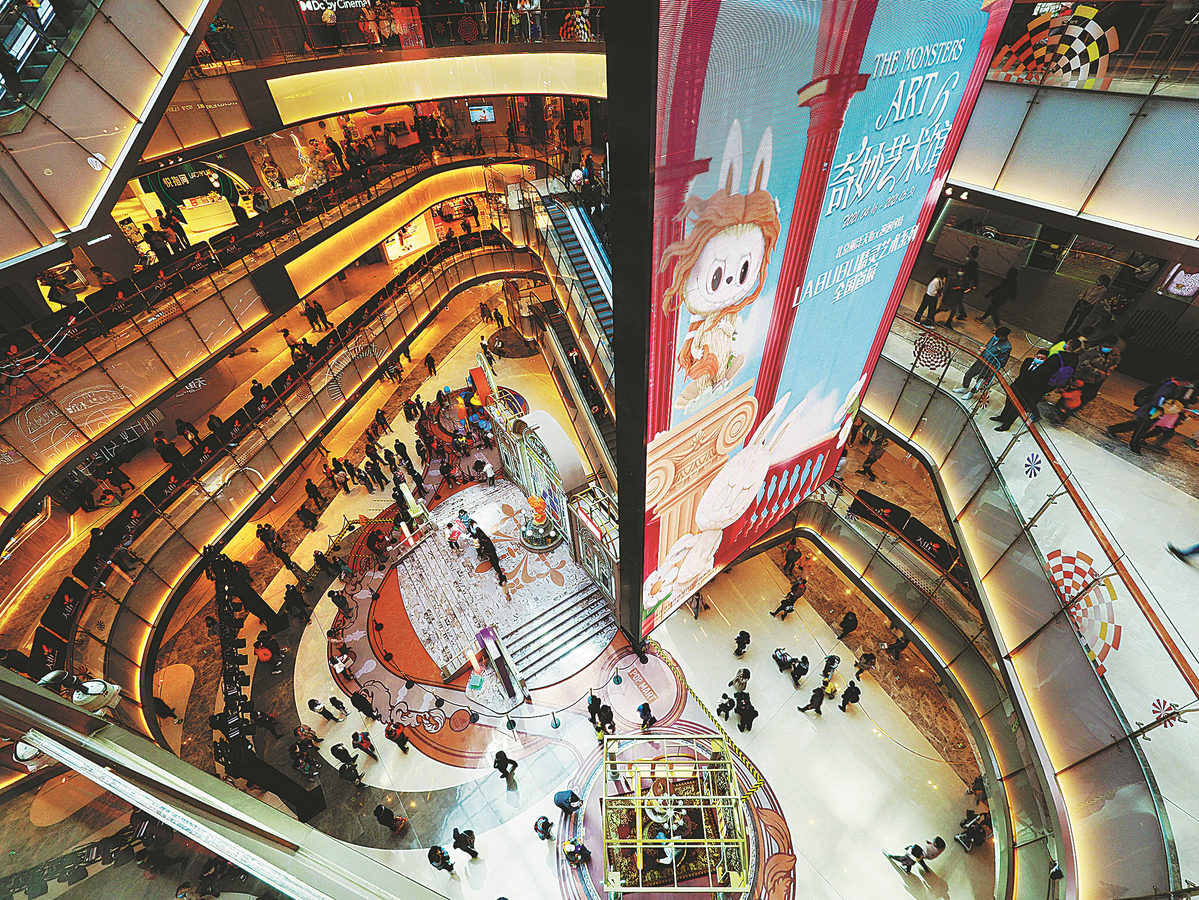Capital's axis takes on new cultural, social life
By DU JUAN | China Daily | Updated: 2022-01-25 09:03

In line with the capital's target of becoming an international center of consumption by 2025, authorities in Beijing have been engaged in a number of developments, including the one focused on its south-central axis.
Over the past five years, the city has placed a lot of effort on developing its central axis, especially in terms of cultural and environmental offerings. More than 100 historical renovation projects have been launched along the 7.8-kilometer axis, which has turned it into a traditional cultural destination, according to Beijing's cultural heritage administration.
Fengtai district, where most of the south-central axis is located, has built 16 parks along its length in the past four years, adding new green areas totaling 570,000 square meters.
Now, the south-central axis will be given greater significance with the addition of fashion and international elements.
According to a plan released by the district recently, Lize and Dahongmen-two major business areas along the south-central axis-will be transformed into international fashion consumption zones by 2025.
Dahongmen will be home to major public cultural facilities, including national-level museums, art exhibitions and cultural shows, with the aim of becoming a showcase for the capital's culture, while Lize will focus on digital consumption to become a core international consumption landmark for southern Beijing.
"The development of the southern part of Beijing used to lag behind northern areas. There was a clear economic gap between the two parts of the city," said Feng Yuying, a 20-something resident of Fengtai. "In recent years, I have seen rapid growth happening around us. There are more modern malls where we can go shopping and an increasing number of art spaces with galleries and cafes."
Niu Hu, 36, a businessman who has an apartment in Fengtai, said he is confident in the future of the district.
"The digital economy will be a growth point that offers promising business opportunities. The government's plans for the creation of international consumption zones and upgrades to the natural environment along the south-central axis add color and comfort for residents," he said. "So I chose to settle here."
In addition to Fengtai, other districts like Yanqing, Huairou and Miyun, which are not in the downtown area, are investigating their strengths to explore new opportunities presented by the capital's consumption center build-up process.
Yanqing, where some of the 2022 Winter Olympic Games will be held, will pour its efforts into three areas: the Great Wall, winter sports and the International Horticultural Exhibition.
Ren Jianghao, deputy head of the district government, said Yanqing will also accelerate plans for its fashion and leisure consumption businesses. Since the district is far from the downtown area, it has set up 376 homestays capable of accommodating 3,700 tourists to draw people to its scenic areas.
Huairou, where the Beijing International Film Festival was held, will focus on the movie, tourism and culture industries. Miyun will develop e-commerce, exhibitions and the tourism, health, aviation, international education and wine industries to drive growth.
























